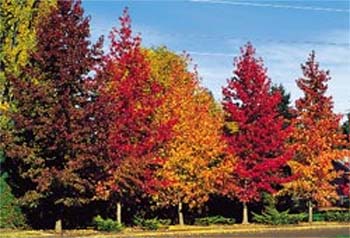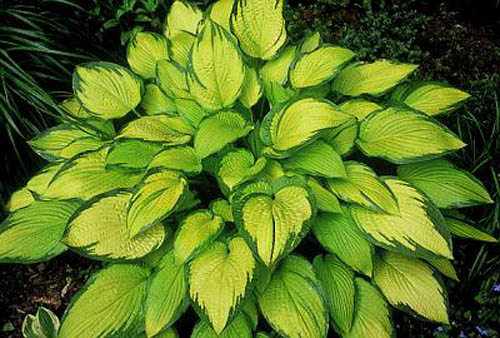Not all of us are fortunate enough to live by lakes or streams. Most of us, if we want a water feature, must create one from scratch. The charm of the water garden lies in its cool appearance and the freshness of its vegetation during the hot summer months. Hopefully, the following will encourage you to create a patio garden feature.
Almost all water plants prefer a sunny location, four to five hours of direct sun is needed before most water lilies will bloom. Avoid overhanging tree limbs since they can cause extra maintenance with dropping leaves. Water gardens can do well with at least a filtered sun if you are not interested in plants flowering.
Once a suitable site is found, you need to decide the size. This is really up to the individual and how much time and money we want to invest. We would suggest for the average home gardener, to start small. Ponds can take more work than you may think. We all know about the large maintenance requirements of a backyard swimming pool, just think of now trying to grow plants and fish in it. We would also suggest using one of the prefab garden liners. These come in many sizes and shapes, select one that you can at least reach the center of from at least two sides. This is similar to what we recommend with raised beds, it really simplifies the work. We would also recommend one of medium depth to begin with.
Today you can buy pond kits that will quickly get you started. These include the liner, filters, pump, and necessary fittings and connections. Also, they should at least contain basic installation and operating instructions. Your pump should run 24 hours to help keep the water well oxygenated. This is especially important during hot summer days. The filter should be cleaned whenever water flow to the pump is noticeably restricted, at least every 2-3 weeks.
You can expect to give your water garden a cleaning once or twice a year. Drain your pond and place your fish in a separate container of pond water, remove all plants and clean out any debris that has collected at the bottom of your pond. Refill your water garden with fresh water and return all plants. Before adding your fish, give them a chance to adjust to any change in water temperature and treat the water to remove any chlorine that may be found in tap water. Water can be added to replace evaporation as needed during the summer. Cleaning can be repeated any time during the year that your water becomes dirty with floating debris or waste. However, with proper balance and care it should not be required more than once a season.
Water temperatures above 80 degrees can be harmful to fish and plants. During extreme heat spells it is best to partially shade your garden. Placing potted plants around the perimeter to shade the sides of the pot is also effective.
Your water garden may go through an algae’s bloom before your plants become well established. This is harmless to fish and plants and will clear up as your plants grow and absorb the nutrients algae needs to survive. The green covering on the sides of your pots below water is normal, desirable and a sign of a healthy pond. Once in balance, your pond should remain clear enough to see near the bottom of the garden. Snails may also help keep your garden clear.
The successful water garden is one of balance. Plants balance a pool by oxygenating and shading it. For the small garden, use containers for planting, such as plastic tubs or clay pots. This will help prevent spreading and overcrowding. Also, containers provide an easy way to remove plants in the winter months. There are four types of plants suited for the smaller gardens, shallow water, medium water, bog, and floating plants. A mix of all four provides a self-sustaining system. Fill containers with moistened soil, pack soil tightly, cover with pea gravel to keep the soil from floating up, and lower the container to the correct depth in the pond. Introduce plants to the pond during the active growing season. If you plan to add fish, wait at least 4-5 weeks after planting.
For shallow areas 6-8 inches deep, in zones 5, we suggest the following:
- Purple Iris
- Spiky Green Rush
- Miniature Spearwort
- Floating Heart
In medium depths, 9-18 inches, in zone 5 use:
- Lavender Musk
- Lizard’s Tail
- Water Pennywort
- Suwannee Mist Lily or Helvola White Lily
For the bog areas, include cattail, Japanese and water iris, bamboo, papyrus, and other grasslike plants. Bog plants grow naturally in mud or in up to 6 inches of water so they also need a container set just below the water line.
Plants known as water weeds, although not appearing above the water, are important to your pond’s health. They slow the growth of algae, absorb excess nutrients that would cloud the water, and provide fish with food. Such varieties such as “elodea/anacharis” and “cabomba” are very inexpensive and can be bought by the bunch from suppliers. The plants require sandy, gravel-like soil and are hardy enough to survive the winter.
Aquatic plants are hungry feeders and need a good supply of nutrients throughout the growing season. An application of a slow release aquatic fertilizer tablet about May 1 followed by a second application in July will be adequate. Waste from fish will provide supplemental fertilizer during the season.
Water lilies are one of the most popular pond aquatics because they are colorful, easy to care for, and highly fragrant. In northern areas, they bloom later in the season. Unless stored, they die when frost occurs, most gardeners store them in a greenhouse pond over winter or treat them as annuals.
Going into winter, trim back all hardy plants to about 3-6 inches. The pump should be disconnected from any spouting ornament and placed about 2-4 inches below the water surface so that the moving water prevents total freezing. Another option is to replace the pump with an inexpensive birdbath heater. If you have tropical plants you can bring them indoors as a houseplant over the winter or discard and replace them next spring. Tropical water lilies and floating plants are best replaced each year.
Use no more than 2 -3 fish in a small garden pond unless you want to install a filtering system. We recommend common goldfish, black moors, or a variation on the common goldfish. It is best not to feed your fish in a patio garden on a regular basis so that they will scavenge on their own for natural food such as insects, and algae. If you do wish to feed them, try feeding them 2-3 times a week removing any food not consumed within 10 minutes. Stop feeding if the water begins to cloud or water temperatures drop below 50 degrees.
As we mentioned before, our intent is to encourage you to try water gardening, give you some basic pond information, and sources of reference. We will be covering the various aspects of water gardening in depth in following issues. Most communities now have a garden center that specializes in water gardens and this is a good time of year to visit them as they have more time to spend with you. Also, many give seminars or hold classes on gardening during the Winter months. You may also want to visit The Aquatic Gardeners Association (http://www.aquatic-gardeners.org/), their purpose is to distribute information about aquatic plants and increase interest in aquatic gardening.



